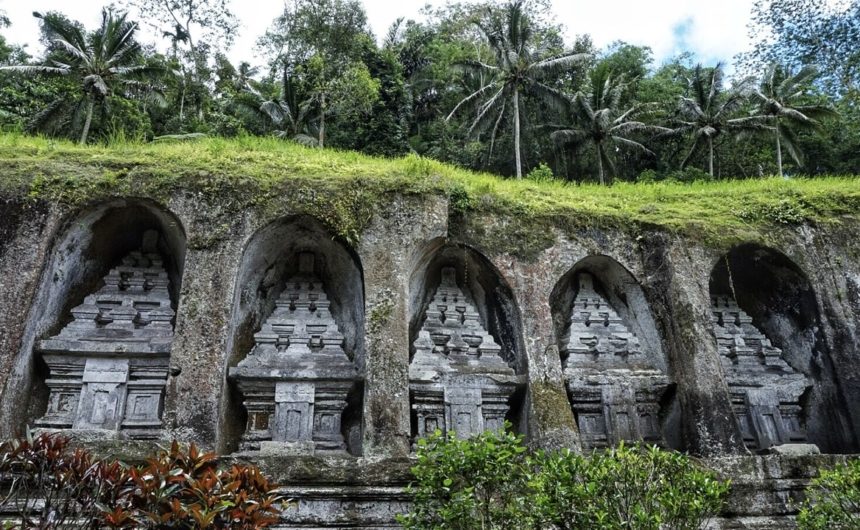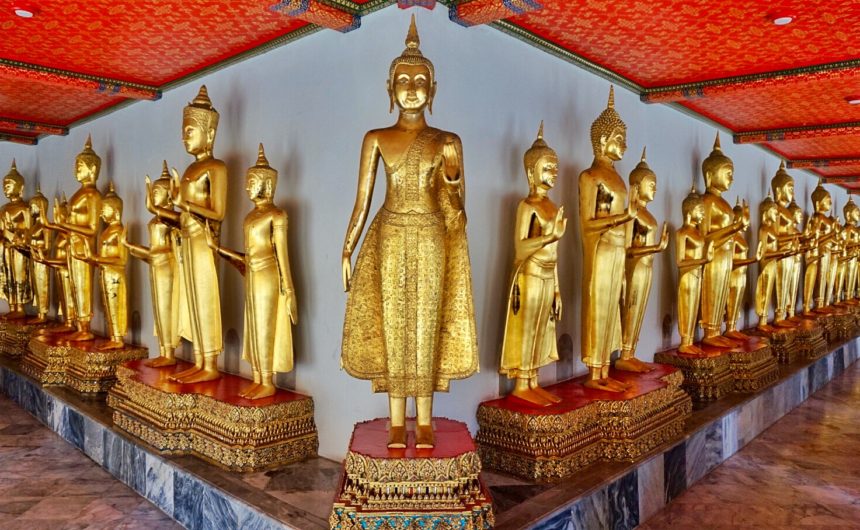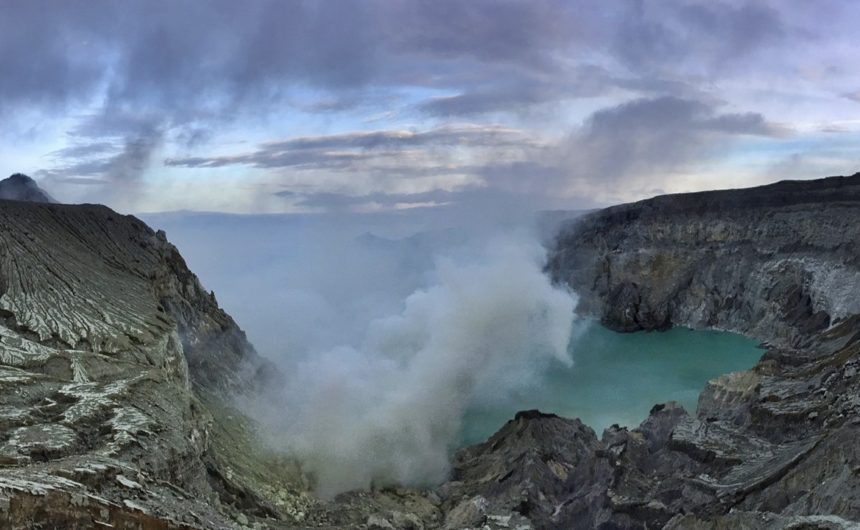- Angkor Wat Sunrise by Bicycle
- India – Everything You Need To Know Before You Go
- Myanmar – Everything You Need To Know Before You Go
- Vietnamese Food – 17 Must-Try Food and Drinks in Vietnam
- The Ultimate Guide to Exploring Ho Chi Minh City On a Budget
- Vietnam – Everything You Need To Know Before You Go
- Southeast Asia – Everything You Need To Know Before You Go
- 29 Reasons Why You Must Travel Southeast Asia
- How to Stay Safe in Southeast Asia
- Responsible Travel in Southeast Asia
- 20 Common Scams in Thailand And How To Avoid Them
- Ijen Volcano Blue Fire Hike in Indonesia
- Etiquette in Southeast Asia
- Orangutan Trek in Bukit Lawang (And What It’s Like To Get Chased By One)
- 14 Free and Cheap Things To Do In Ho Chi Minh City
- Indonesia – Everything You Need To Know Before You Go
- Laws in Singapore You Must Know Before You Go
- Thean Hou Temple in Kuala Lumpur
- The Ultimate Travel Guide for Singapore on a Budget
- 19 Fun And Free Things To Do In Singapore
- The Ultimate Guide to Exploring Kuala Lumpur On A Budget
- 14 Fun And Free Things To Do In Kuala Lumpur
- The 3 Most Beautiful Must-See Temples in Kuala Lumpur
- Malaysia – Everything You Need To Know Before You Go
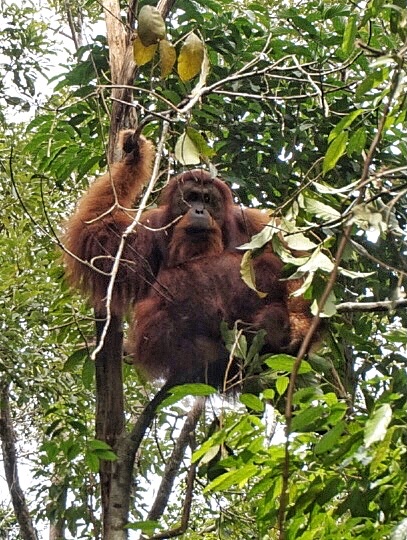
ORANGUTAN FACTS
Orangutans are one of the 5 great apes (the other 4 are gorillas, chimpanzees, bonobos and humans) and they are incredibly intelligent animals. Humans share 97% of the same DNA with orangutans, which makes them one of our closest relatives (our closest is the chimpanzee at 99%).
The orangutan is the world’s largest mammal that lives in trees, which is why it has very long and very strong arms for swinging in trees and vines. Their arm-span is around 2m/6.5ft, which is longer that their height. Every night, they make a new nest in the trees for sleeping.
Females weigh around 37kg/81lb and males weigh around 87kg/191lb. An orangutan mother is pregnant for around 9 months and she typically only carries one baby at a time, just like humans. The mother and child have a close bond for 6-7 years before the child goes off on its own. Orangutans can live 30 to 40 years in the wild and up to 70 years in captivity.
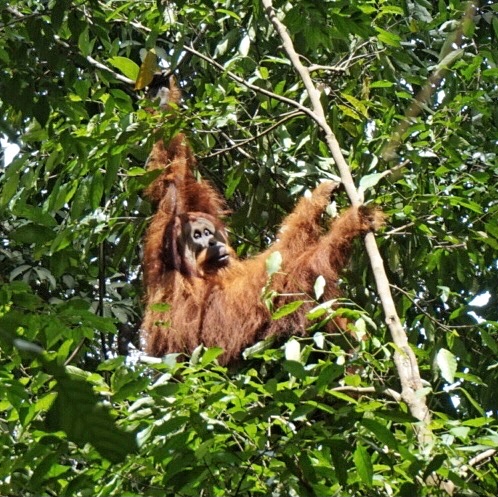
They love to eat fruit, with durian being their favorite.
PALM OIL PLANTATIONS AND DEFORESTATION
Why palm oil? It’s far more efficient because using an alternative oil would require up to 10 times the land to grow, which also means palm oil is much cheaper. The economic greed of those in power exceeds their care and concern about the environment and animals, but there are many conservation efforts that are trying to save the orangutans and their habitat.
HOW TO CHOOSE AN ORANGUTAN JUNGLE TREK
You can choose between 3 hour, or 1-3 days treks. I chose a 1 day jungle trek, which is 6-7 hours, and I booked it through my guesthouse. I chose the 1 day trek over the 2-3 day treks because no matter what I do, I get absolutely annihilated by mosquitoes, so I need to minimize my time in the jungle. The 1 day trek is 650,000IDR ($46US) and includes lunch and snacks. I was a solo female traveler, but there were 2 other travelers on my trek.
A 1 day trek is recommended over the 3 hour trek because a longer trek means more chances of seeing more orangutans. You can sometimes trek for hours and see nothing because nature is unpredictable.
WHAT TO EXPECT ON AN ORANGUTAN TREK
The hills are steep and riddled with vines and tree roots, and it’s muddy and slippery if it has rained recently (which it often has).
Orangutans are solitary animals so you only see one at a time, unless it’s a mom and baby.
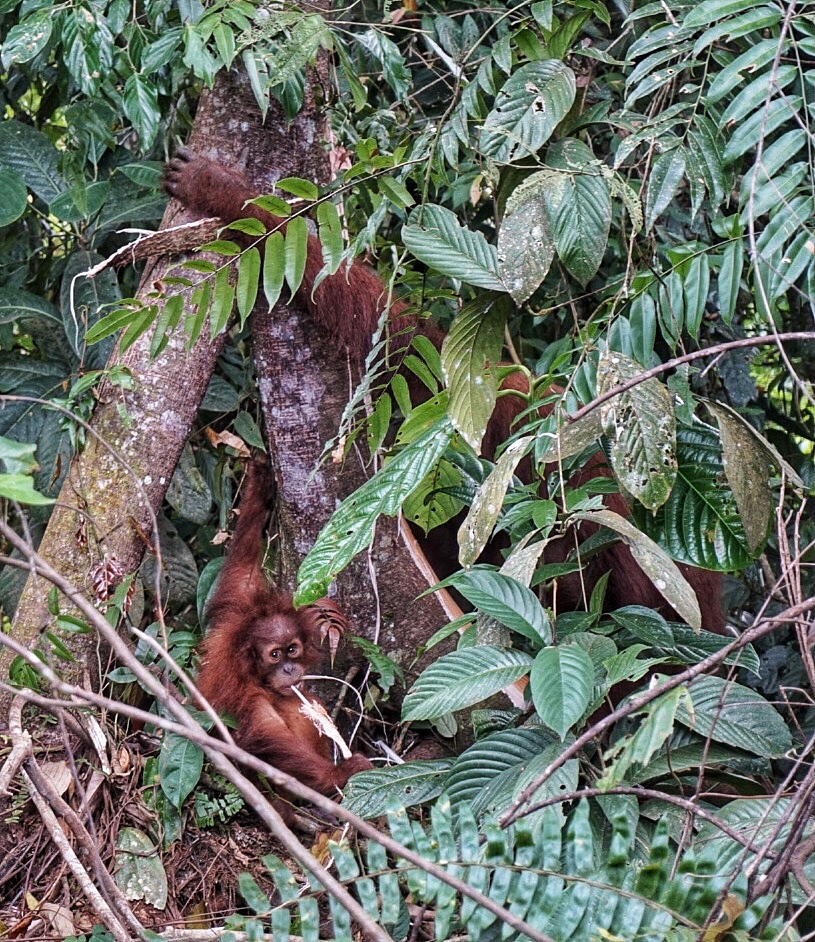
The orangutans you see aren’t super far away, but they’re far enough and high up in the trees for you to need a good camera and good lens for close up detail. Take videos too. And you must make sure your flash is off. Unfortunately, I realized I could’ve used a better zoom lens on my Sony A5000.
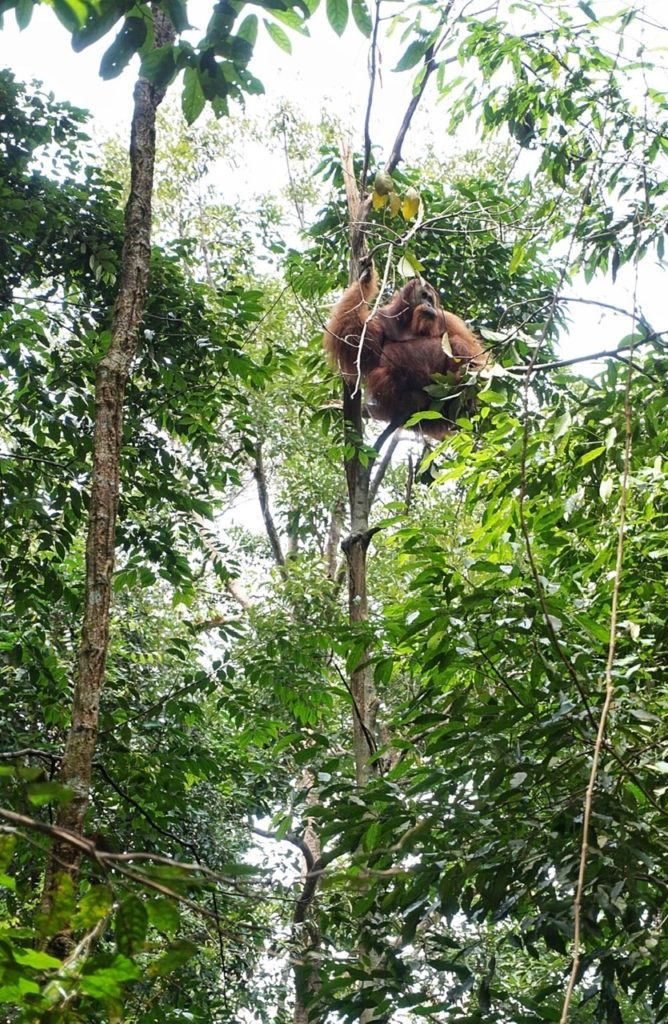
My group saw 7 orangutans in total over 6-7 hours of jungle time. The first was a very brief sighting as he disappeared into the trees. We saw a mom and baby at the beginning of our trek and another mom and baby duo at the end.
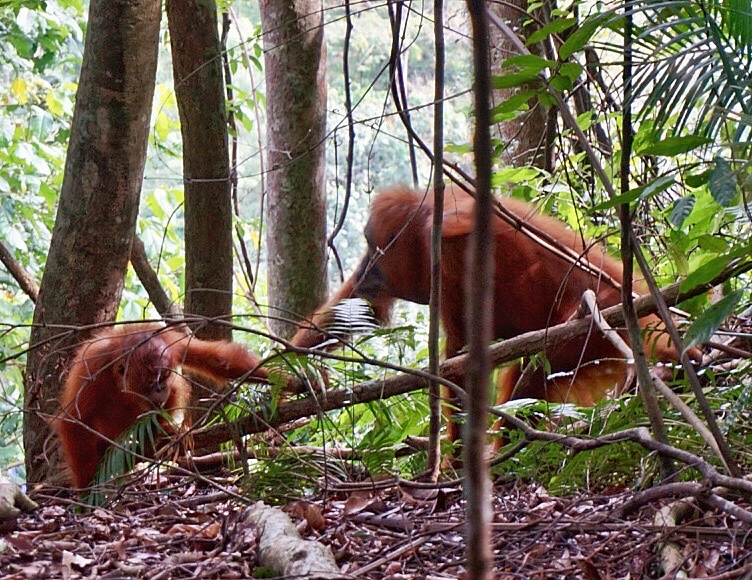
And a very handsome 30 year old male hanging out high up in a tree.
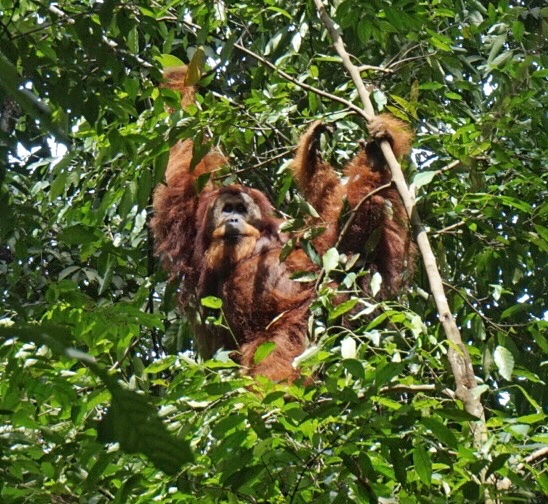
Then we didn’t see anything for a while so we took a lunch break (they provide lunch).
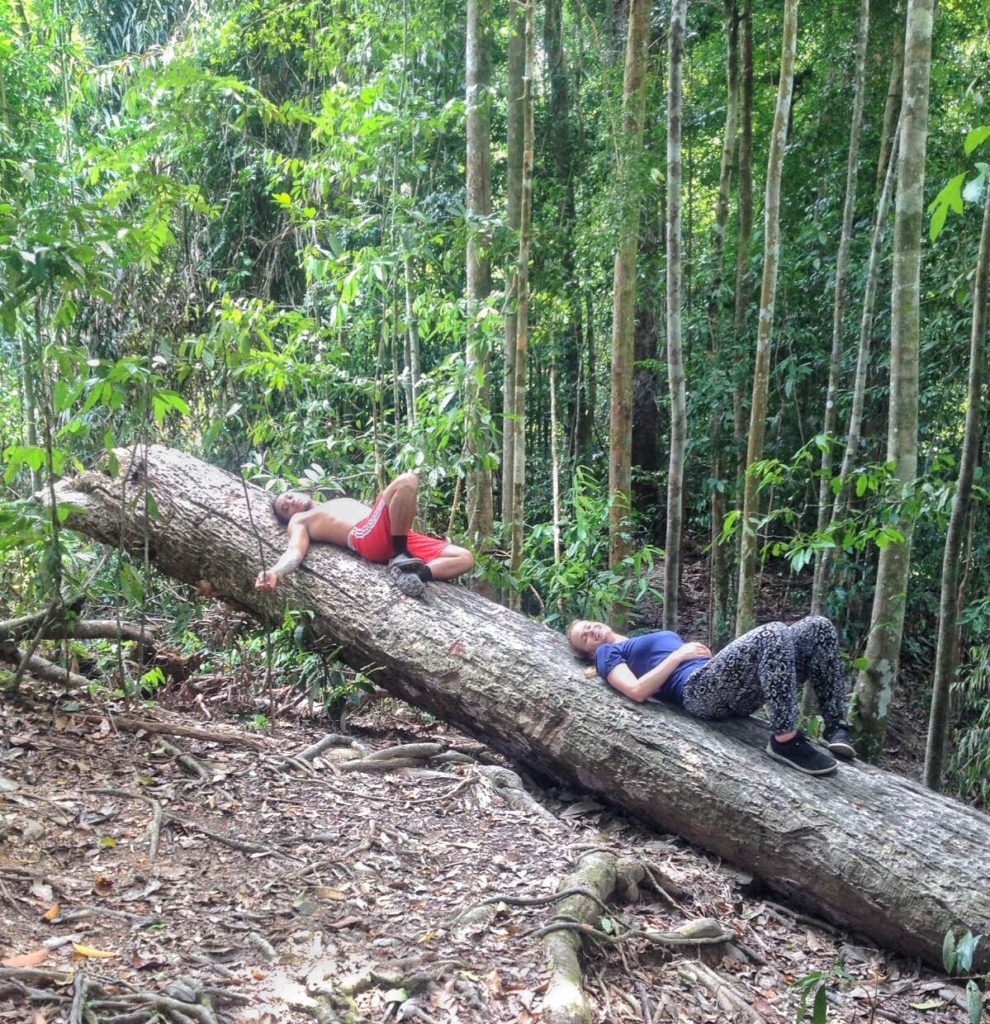
After a few hours, we saw another large male orangutan sitting in a tree.
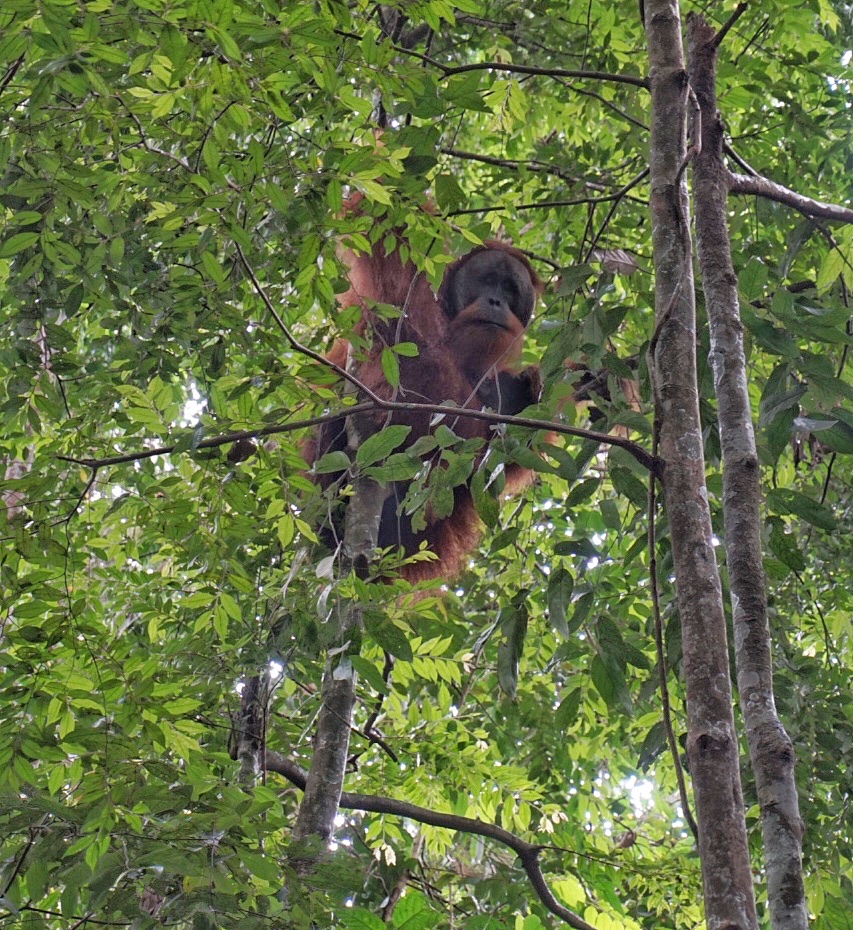
Aside from orangutans, you can also see gibbons, macaques, toucans, Sumatran peacocks and more.
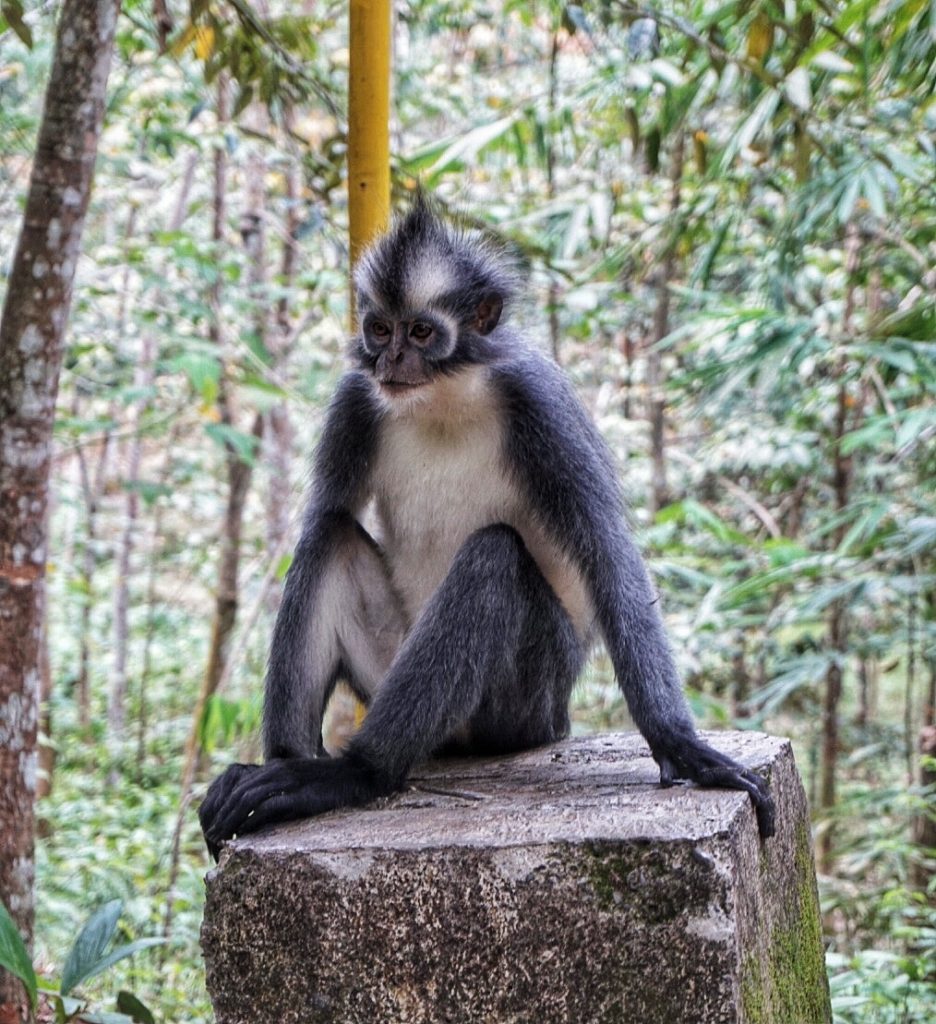
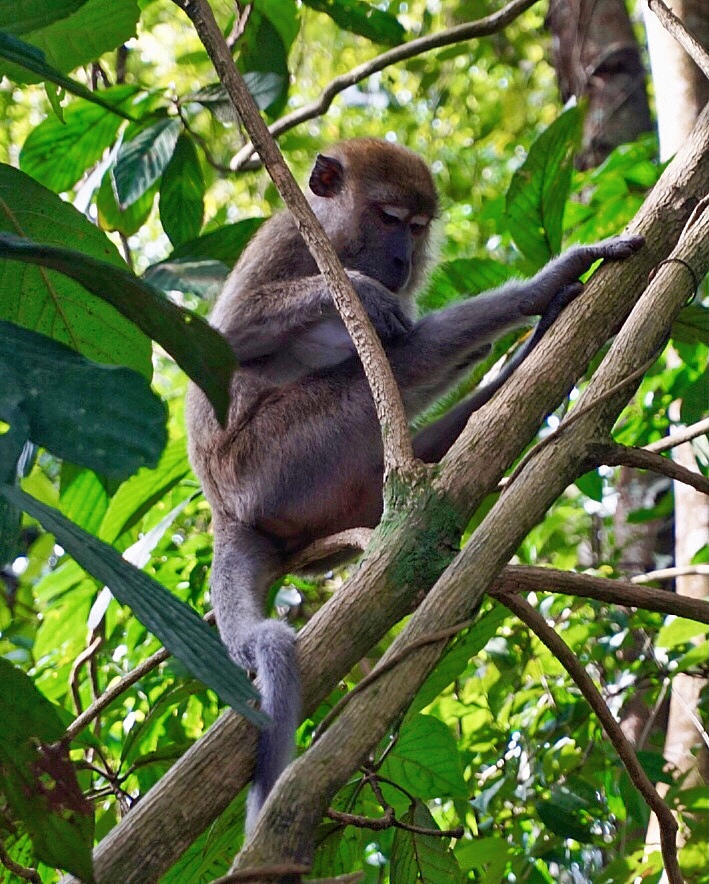
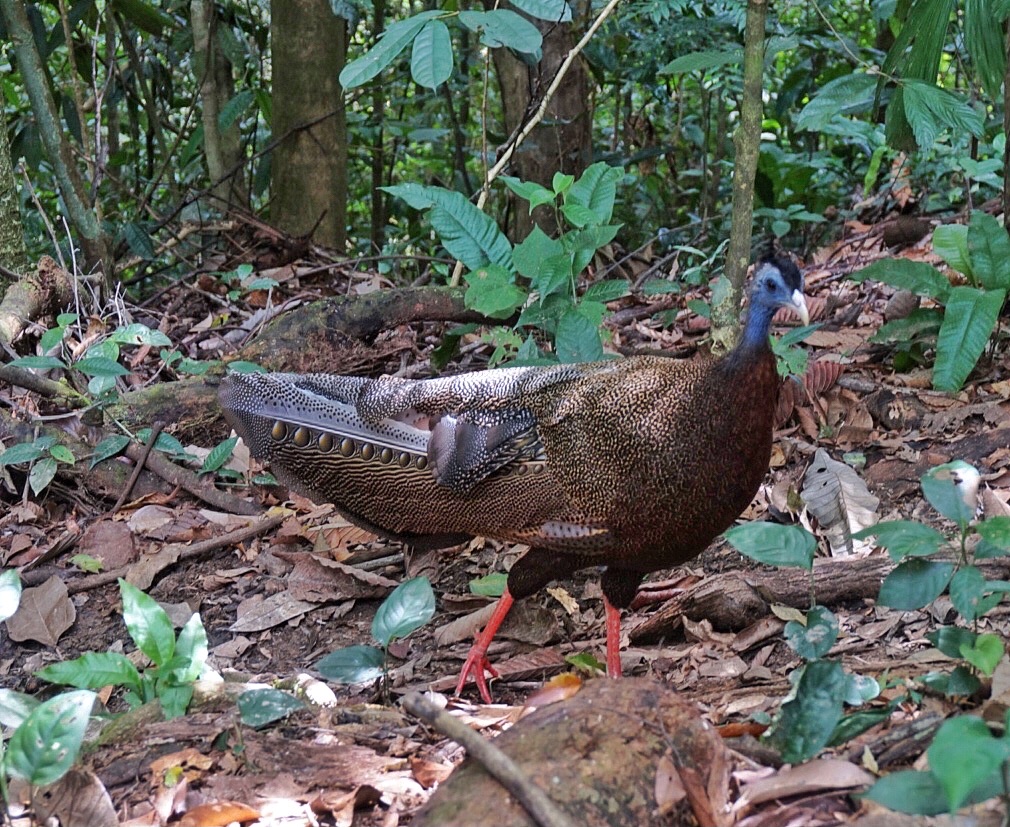
WHAT IT’S LIKE TO GET CHASED BY AN ORANGUTAN
… What?
The orangutan starts following us.
Our guide tells us to not run and to not be scared because the orangutan can sense fear. But he tells us to walk very fast and not stop.
The orangutan was following us for a long time. And the jungle trail is extremely steep, wet, muddy. Every time we thought we finally lost him and turned around to check, this giant orange beast would turn the corner and appear behind us. Luckily, our guide said male orangutans aren’t faster than humans, but the females are faster. I didn’t want to know what this scenario would be like if it was a female following us instead.
He chased us all the way out of the jungle, but we saw a mom and baby orangutan duo on the way out, so that was a nice ending to our jungle trek.
This story isn’t meant to scare you. This is rare, but orangutans are wild animals, which is why you need to be with an experienced guide. But it sure makes a great story now.
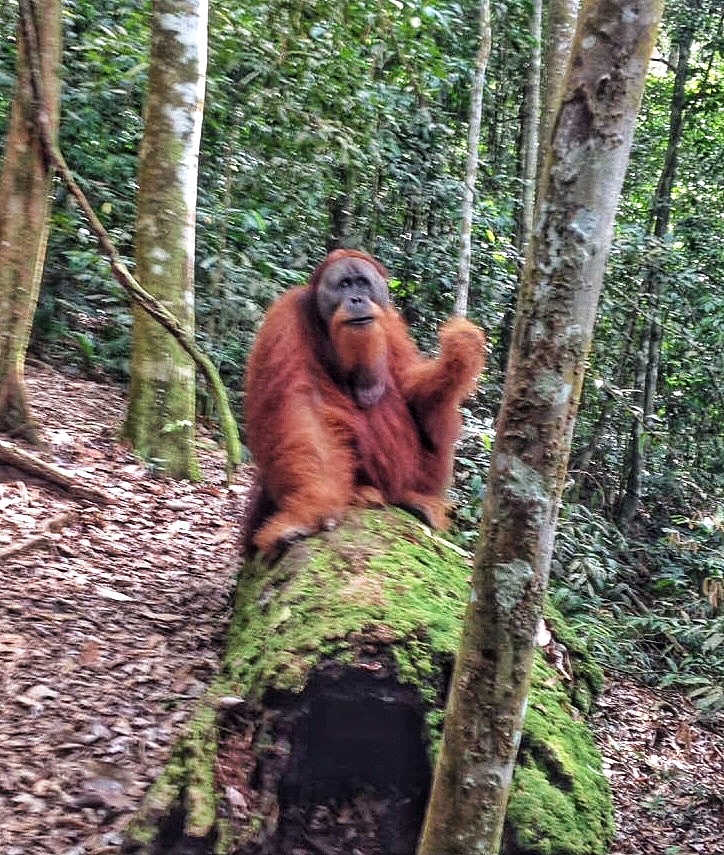
WHAT YOU NEED
- Patience
- Sunscreen
- Long, loose clothing
- Hiking/athletic shoes
- Bug spray
- Water
- Rain jacket/poncho
- Camera with a good zoom
WHEN TO GO
You can visit the orangutans year round, but the dry season is preferable if you want to avoid torrential downpours. Bukit Lawang is hot with very high humidity all year.
The dry season is from April to September. However, dry season is also high season, with the busiest time being July and August. Weekends and holidays are also very busy.
Low and wet season is October to March. I was there in early February so it was very quiet and not the best weather. When it rains, it absolutely pours, but luckily it didn’t rain on my trek.
WHAT TO EXPECT IN BUKIT LAWANG
Bukit Lawang is a very small, peaceful village on the edge of the jungle in northern Sumatra. It’s isolated, yet reachable and within 4-5 hours from Medan (and its international airport).
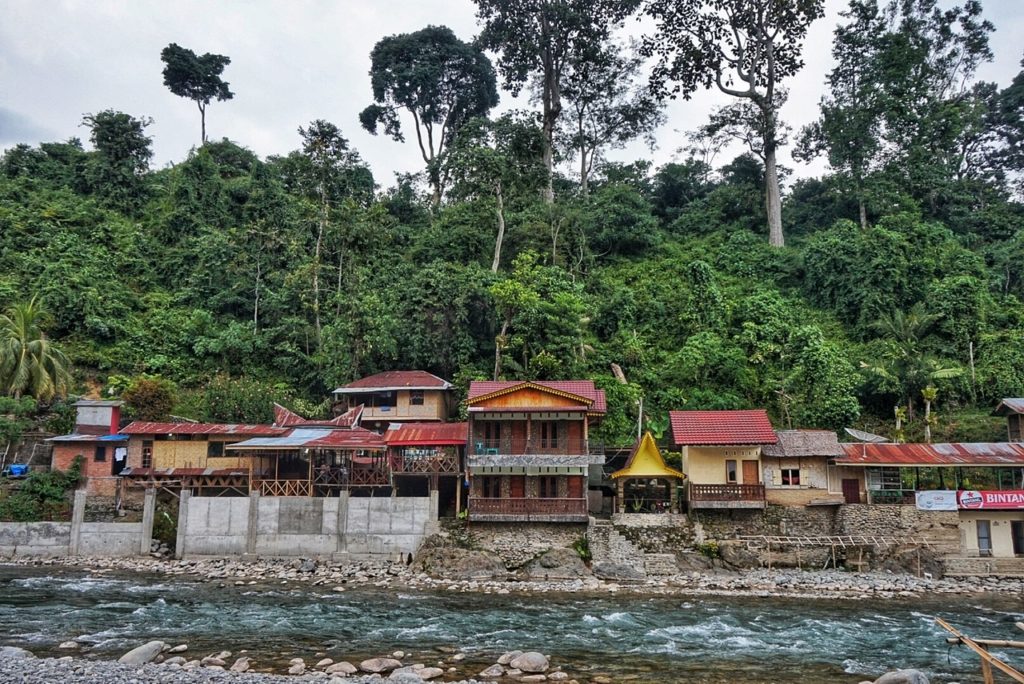
The wi-fi is not strong and it’s normal for the electricity to cut out at least once a day. A local SIM card will help immensely with staying connected.
Expect rustic accommodation and facilties.
There isn’t an ATM, so bring enough cash with you. And don’t expect to use your credit or bank cards.
Watch out for monkeys who will try steal your things. Keep the doors and windows closed in your room.
The mosquitoes are plentiful and merciless, but malaria is not a threat.
OTHER THINGS TO DO IN BUKIT LAWANG
- Relax
- Swim in the river
- Tubing
- Explore the village
- Admire the street art
- Talk to the friendly locals
HOW TO GET TO BUKIT LAWANG
My accommodation offers private transport to Bukit Lawang for 600,000IDR ($43US), which can be split between 4 people, but I’m a solo, budget traveler so I took public transport.
From Medan’s Kualanamu International Airport, take a 2 hour bus to the Supermall in Binjai – 50,000IDR ($3.50US)
From Binjai, take a minibus to Bukit Lawang – 15,000IDR ($1US)
Total trip time and cost = 5+ hours/IDR ($4.50US)
Don’t listen to any local men who tell you that you need to go to another bus station on their transport. It’s a scam to make money.
Keep in mind that buses don’t leave until they’re full or mostly full and the roads aren’t good, which adds to the travel time. You can also expect a very hot and sweaty journey because most public transport doesn’t have AC.
When I left Bukit Lawang to go back to the airport in Medan, I took a direct shared private shuttle for 190,000IDR ($13.50US). With walking to the shuttle meeting point in Bukit Lawang, waiting for the shuttle and then the driving time, the journey to the airport still took 5 hours and I just barely made it in time for my flight to Yogyakarta. And the shuttle did not stop once, so don’t drink much beforehand.
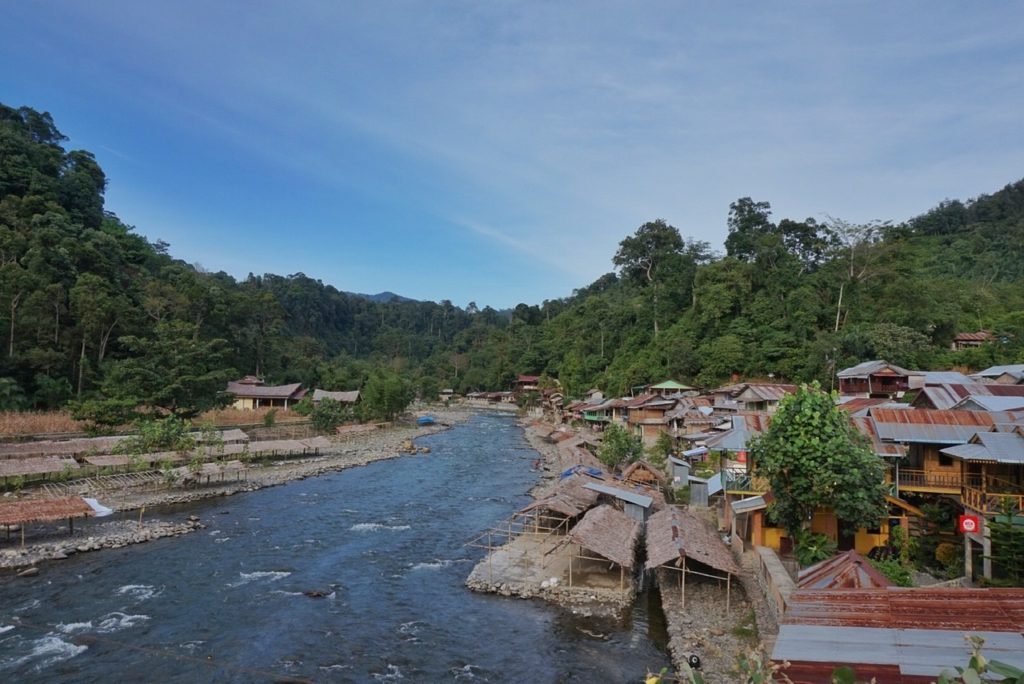
WHERE TO STAY
Nora’s Homestay and Rainforest – Rooms start from 30,000IDR per night ($2US). I paid 50,000IDR per night ($3.50US) for a very basic private room with shared bathroom during the low season. The staff are really lovely, friendly people and they’re very musically talented with their singing and guitar sessions every night. And the restaurant has really tasty and cheap food.
MORE INFORMATION ON TRAVELING SOUTHEAST ASIA
INDONESIA – EVERYTHING YOU NEED TO KNOW BEFORE YOU GO
IJEN VOLCANO BLUE FIRE HIKE IN INDONESIA
SOUTHEAST ASIA – EVERYTHING YOU NEED TO KNOW BEFORE YOU GO
29 REASONS WHY YOU NEED TO TRAVEL TO SOUTHEAST ASIA
HOW TO STAY SAFE IN SOUTHEAST ASIA
RESPONSIBLE TRAVEL IN SOUTHEAST ASIA
WHAT TO EXPECT WHILE TRAVELING DEVELOPING COUNTRIES

